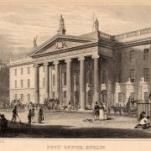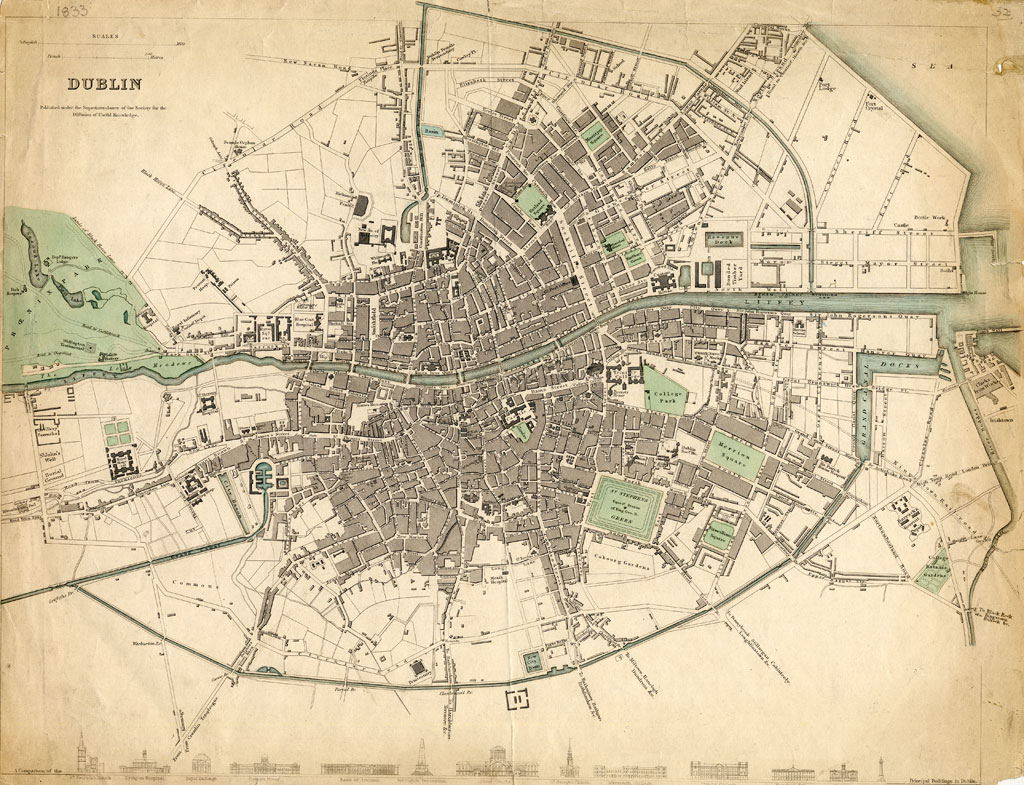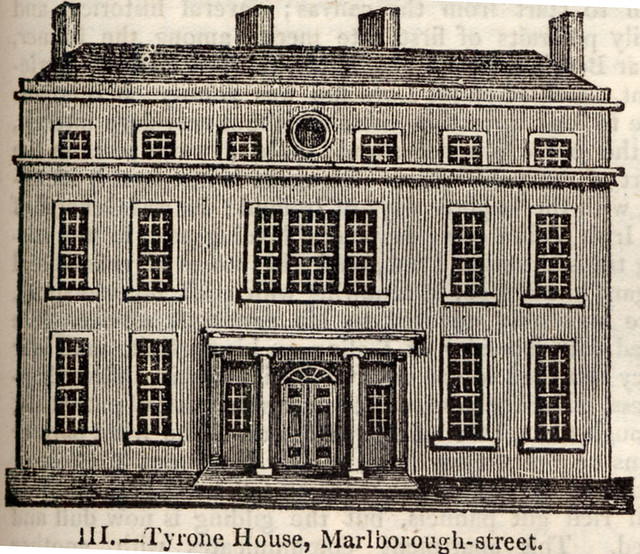Dublin Heritage: The life history of a city
Published on 7th August 2014
 When the Vikings founded the city in the ninth century in the area of the “black pool” (Dubh Linn in Irish) where Dublin Castle is today, they started what would later become the capital of Ireland and the largest city in the country. Dublin is a key to understanding Ireland; the history of this city helps us to better understand the history of the whole of the country, its development, its cultural features, its social composition and the political peculiarities in Ireland.
When the Vikings founded the city in the ninth century in the area of the “black pool” (Dubh Linn in Irish) where Dublin Castle is today, they started what would later become the capital of Ireland and the largest city in the country. Dublin is a key to understanding Ireland; the history of this city helps us to better understand the history of the whole of the country, its development, its cultural features, its social composition and the political peculiarities in Ireland.
While we are walking through the streets of the city and we see the historical buildings and places, we realise the cultural wealth that this city has to offer. Nothing remains visible from the period before the Viking settlement except what you can see in the collections, exhibitions or museums in the city (the most important being the National Museum in Kildare Street). But it was with the Vikings, as we said before, that the city began its development. They ruled the city until 1014, when they were defeated by the Irish King Brian Boru in the famous Battle of Clontarf, near Dublin. Although they had lost their political supremacy, they remained in the city some more years with commerce as their principal activity. Then Ireland was invaded by the Anglo-Normans and in 1171, Diarmait Mac Murchada, King of Leinster, and Strongbow conquered Dublin and expelled the Vikings from the city. The following year Dublin received a City Charter from King Henry II; it was the beginning of the English rule of Ireland. Then Dublin Castle, built in 1204 by direct order of King John of England, became the centre of English power.
During medieval times the city continued to expand and develop, especially as a trade centre, with relative freedom from the English monarchy. The Anglo-Norman invaders were in contact with Irish people and both cultures were mixed, but the Irish culture had the supremacy. St. Patrick’s and Christ Church Cathedrals date back to this medieval period. At the beginning of the Modern Age, an event deeply changed the history of the city and the whole of Ireland. After the Act of Supremacy and the emergence of Anglicanism the times were not easy for Catholics; the process of dissolution of monasteries was carried out and the Church of Ireland (the Anglican community in the country) was established. Since then disputes and problems between Protestants and Catholics were common in Ireland and of course in Dublin city. Trinity College, founded by Queen Elizabeth I in 1592, is an example of the legacy of the Protestant Reformation, it was a protestant (and also unionist) centre throughout the centuries. Nevertheless Dublin was becoming the second most important city in the British Empire.
After the tumultuous period of the sixteenth and seventeenth centuries (the Tudor conquest of Ireland, the introduction of Protestantism, the Nine Years War, the Rebellion of 1641, the Irish Confederate Wars, the Cromwellian Settlement against the Catholics, etc), Dublin entered the eighteenth century, one of its most prosperous period, its golden age. The features of Georgian Dublin are something that the visitor can easily appreciate. New areas were constructed, such as Mountjoy Square, Merrion Square, Westmoreland Street or Henrietta Street, with the typical Georgian-style house: white or red brick façade, doors in ancient Greek style (with porticos and pillars) and high rectangular windows. It was also the time for the great architects (such as James Gandon or William Chambers) and for the construction of the big houses for the gentry and the nobility. Nevertheless, dissension and political opposition continued, and the 1798 Rebellion anticipated the troubles in the following centuries.

Image: Dublin Street Directory Map 1833
In 1800 the Act of Union was proclaimed and the Irish Parliament was suppressed. 1803 saw the failed rebellion led by Robert Emmet, executed in front of St. Catherine’s Church. Through the nineteenth century poverty, diseases and famines were part of everyday life in Dublin. The British Parliament also increased its authority in the city, resulting in resistance from different political groups. All exploded in the early twentieth century, with the Easter Rising in 1916, the War of Independence and the Irish Civil War, a troubled period during which many important buildings (GPO, Four Courts, Custom House) and also some areas of the city were damaged or destroyed. Anyway, Ireland achieved its independence (1922) and became a Republic (1949), and Dublin remained the capital of the country. Since then the city has continued to develop with the renovation of the city in the 1960s and 1970s and with an extraordinary economic growth in the twentieth and the early twenty-first century.
Walking through Dublin city, enjoying its historical buildings, is a full history lesson. History is behind the walls of the churches, under the road surface, through the streets and squares, into the pubs and museums. But this is living history because the making of a city is a very long process during which people grow, love, hate, fight and work. Don’t forget this point while you visit this amazing city. And enjoy it!
‘When I die Dublin will be written in my heart’ James Joyce
View location of historical buildings featured
View Dublin Heritage: The living history of a city in a larger map
Víctor Aparicio Rodríguez, an intern at Dublin City Libraries between May and July 2014, created this guide. He obtained a degree in History in the University of Alcalá de Henares, Spain. He received a European Union Leonardo Da Vinci scholarship administered through Swan Training Institute, Dublin.
See More
Libraries and Archives on the Digital Repository of Ireland: Digital records relating to Dublin, including photographs, postcards, letters, maps and ephemeral material. Highlights of the collection include the Fáilte Ireland Photographic Collection, Wide Street Commission Map Collection (1757-1851), the Jacobs Biscuit Factory Photographic Archive, and the Royal Dublin Fusiliers Association Archive.
